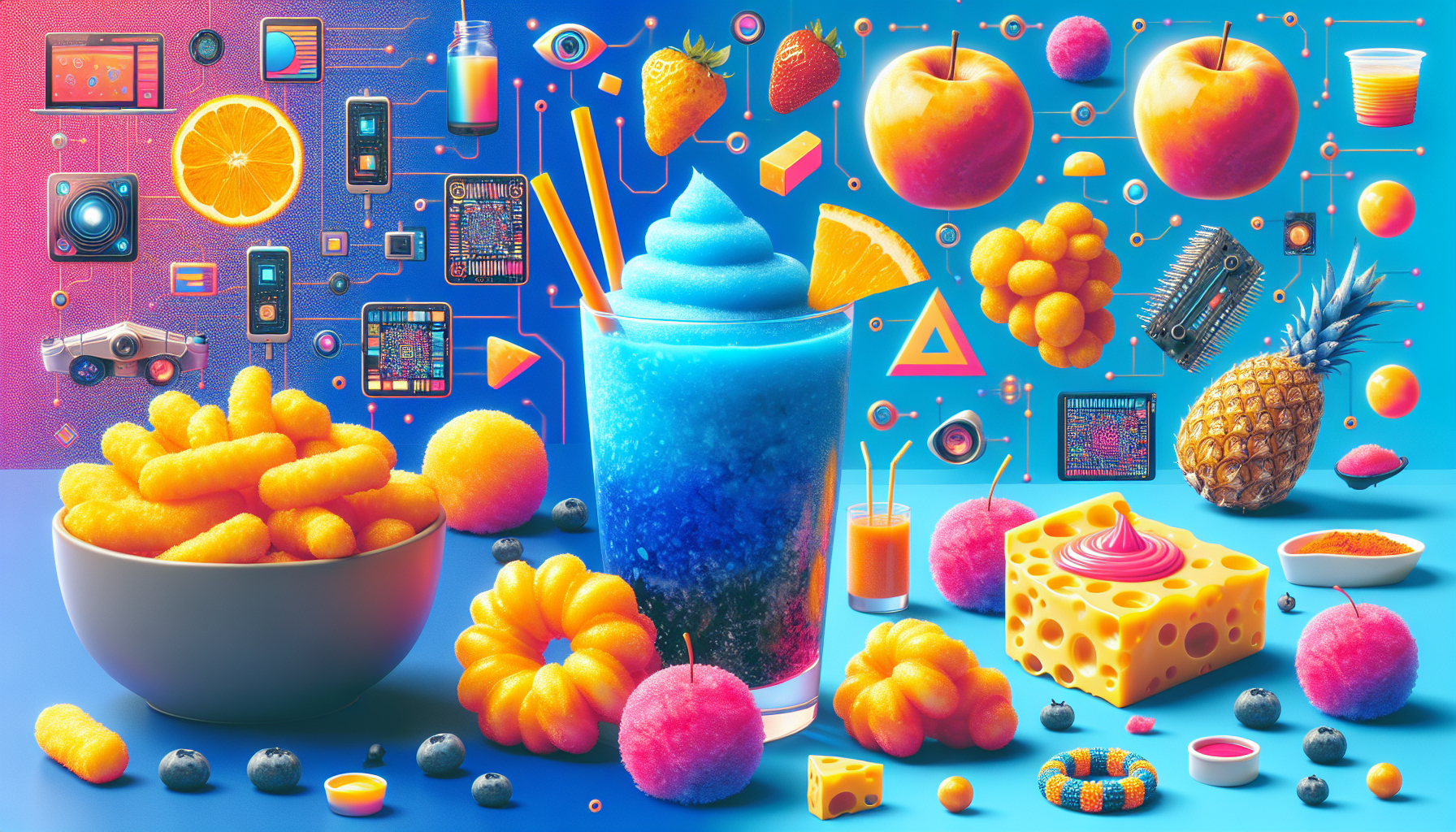
Beyond Blue No. 1: How AI and Tech Startups Are Reinventing the Color of Your Food
Remember that electric-blue slushie from your childhood? Or the unnaturally vibrant orange of your favorite cheese puffs? For decades, the brilliant hues of our snacks, drinks, and candies were the work of a handful of synthetic, lab-created dyes. But the technicolor dream of the 20th century is fading. Consumers are reading labels, demanding transparency, and turning their backs on ingredients they can’t pronounce. And as big food brands scramble to “go natural,” they’ve run headfirst into a massive technological challenge—and created a gold rush for a new generation of tech innovators.
The move away from artificial colors like “Red 40” and “Yellow 5” isn’t just a trend; it’s a seismic shift in the multi-billion dollar food industry. But simply swapping a synthetic dye for a natural one isn’t as easy as it sounds. Natural colors, derived from sources like beets, carrots, and spirulina, are notoriously finicky. They can be less stable, fading under heat or light. Their taste can interfere with the product’s flavor profile, and their cost can be significantly higher. The result? A massive innovation gap. And into that gap are pouring developers, data scientists, and entrepreneurs armed with the most powerful tools of the 21st century: artificial intelligence, automation, and the cloud.
The Problem with Painting with Nature’s Palette
For food scientists at major corporations, the “clean label” mandate has been a frustrating exercise in compromise. Finding a natural red that can survive the heat of a baking oven without turning a dull brown is a monumental task. Sourcing a consistent shade of blue from a plant-based source is the industry’s holy grail. The traditional R&D process involves years of painstaking, manual trial-and-error, mixing and testing thousands of potential ingredients. It’s slow, expensive, and often leads to dead ends.
This is where the old way of doing things breaks down. The world needs better, more stable, and more cost-effective natural colors, and it needs them now. The solution won’t be found in a field or a farm alone; it will be discovered, refined, and scaled inside a server, powered by sophisticated software and intelligent algorithms.
The Tech Revolution: AI as the Master Chef
Imagine being able to predict the perfect, stable, natural color for a new energy drink without ever stepping into a lab. That’s the promise of tech-driven food science, and it’s happening right now. Here’s how tech startups are tackling the challenge.
1. AI and Machine Learning: Discovering a Universe of Color
Nature is home to a virtually infinite library of color-producing molecules, hidden within plants, fungi, and microbes. The challenge is finding the right ones and understanding how they’ll behave. This is a perfect job for machine learning.
- Predictive Modeling: Startups are building massive datasets containing the chemical properties of thousands of natural pigments. An AI model can then be trained on this data to predict a color’s stability under different conditions—pH levels, temperature, light exposure—with incredible accuracy. A food developer can input their product’s requirements, and the algorithm can instantly identify the most promising natural candidates, slashing R&D time from years to weeks.
- Precision Fermentation: This is where the real innovation lies. Using AI-driven genomic analysis, scientists can identify the specific genes in microbes (like yeast or bacteria) that are responsible for producing vibrant pigments. They can then “program” these microbes to become tiny, hyper-efficient color factories, brewing up specific, high-purity colors in a controlled fermenter. This process is not only scalable and cost-effective but also completely independent of agricultural seasonality and supply chain issues.
2. Cloud and SaaS: Delivering “Color-as-a-Service”
This groundbreaking technology isn’t just for the billion-dollar food giants. The rise of cloud computing and the Software-as-a-Service (SaaS) model is democratizing access to this advanced R&D.
Picture a cloud-based platform for food formulation. A small, organic snack company can log in, define their product—say, a vegan gummy bear—and specify their needs: “a heat-stable, bright yellow with no aftertaste.” The SaaS platform, running powerful AI models in the background, analyzes millions of data points and returns a complete solution: the ideal pigment, the recommended formulation, sourcing information, and even pricing. This “Color-as-a-Service” model allows companies of any size to innovate at a speed that was previously unimaginable.
3. Automation and Programming: The Code Behind the Crunch
All of this is driven by code. The discovery and testing process is being supercharged by automation. Instead of chemists manually preparing samples, high-throughput robotic systems can run thousands of experiments simultaneously, 24/7. These robots generate the vast quantities of data needed to train the machine learning models.
Behind the scenes, teams of


